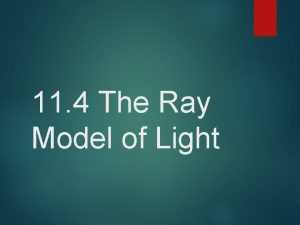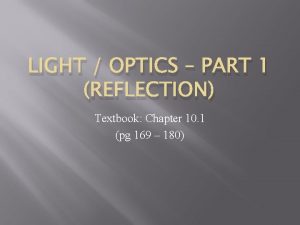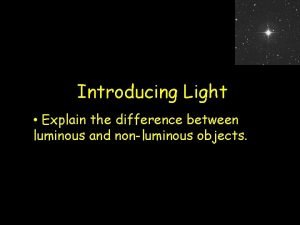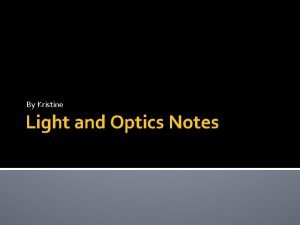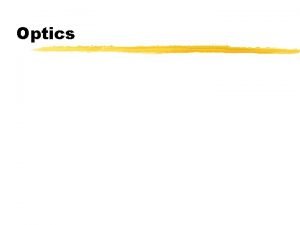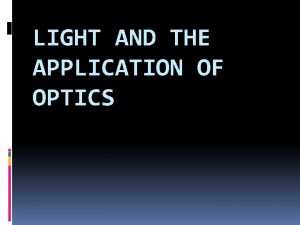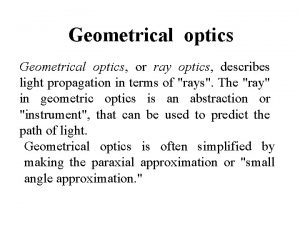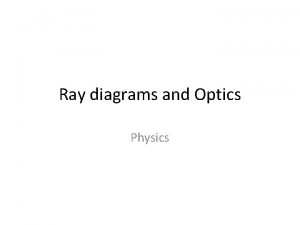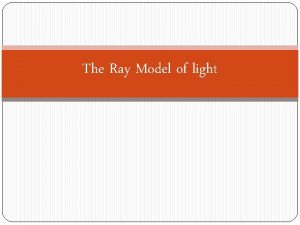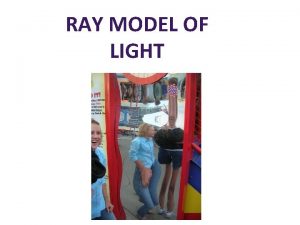Optics Lesson 3 The Ray Model of Light









- Slides: 9

Optics Lesson # 3 The Ray Model of Light

Rays of Light • A light ray is a line and arrow representing the direction and straight-line path of light. • Ray diagrams are drawings that show the path that light takes after it leaves its source. • Ray diagrams help explain why the brightness of a light changes with distance. The more rays that reach your eyes, the brighter the object appears. • Light travels in straight lines until it strikes something, and depending on the material, light will act in various ways – they can transmit, absorb, or reflect light. This use of light is called geometric optics.

Interaction of Light – Transparent materials like glass or clear plastic transmit light freely, and absorb and reflect very little light, which is why you can see clearly through a window. – Translucent materials, like a frosted window, transmit some light, but not enough to see through clearly. They absorb and reflect some of the light. – Opaque materials like clothes and most solid objects absorb and reflect light, but they do not transmit it.


Shadows • Shadows occur when an opaque object blocks the direct light from a light source. The size of the shadow depends on the object blocking the light and its distance from the light source. • The umbra is the part of the shadow in which all light rays from the light source are blocked, and the partial shadow area from a non-point light source is called the penumbra.

Size and Shape of Shadows

Mirrors • An image is a reproduction of the original object that is produced through the use of light. • A mirror is any polished surface that exhibits reflection. It can be flat, also called a plane mirror, or it can be curved (concave or convex mirrors). • Reflection is simply the bouncing back of light from any surface. In order to see most objects, some light rays must reflect off a surface and then enter your eyes. • Mirrors consist of two parts – the first is a sheet of glass and the back part is a thin layer of reflective silver or aluminum. The glass acts only to protective the reflective surface.

Light Reflection • Incoming light rays travel parallel to each other. • If these light rays strike a smooth surface, they are all reflected at the same angle, in the same direction, staying parallel to one another. This is called regular reflection. • If the surface where the light strikes is not completely smooth, like in rough and uneven surfaces, the light rays do not remain parallel to one another but are scattered in different directions. This is called diffuse reflection.

Regular vs. Diffuse Reflection


